 The AF&PA is calling on the Office of the US Trade Representative to exempt Brazilian bleached eucalyptus kraft pulp from potential Section 301 tariffs, arguing that the material is indispensable to the US tissue industry and cannot be sourced domestically at commercial scale. The group submitted its formal comments as part of USTR’s ongoing investigation into Brazil’s trade practices. …On September 3, USTR will hold a public hearing to gather further testimony. AF&PA’s comments focus on the US paper manufacturing sector’s reliance on bleached eucalyptus kraft pulp (BEK), which is sourced almost exclusively from Brazil. …The association argues that imposing tariffs on Brazilian pulp would harm US manufacturers by raising input costs and undermining the competitiveness of US-made tissue products both at home and abroad. …AF&PA also defended the sustainability of Brazilian eucalyptus pulp, stating that member companies source only from responsibly managed plantations certified by SFI and FSC.
The AF&PA is calling on the Office of the US Trade Representative to exempt Brazilian bleached eucalyptus kraft pulp from potential Section 301 tariffs, arguing that the material is indispensable to the US tissue industry and cannot be sourced domestically at commercial scale. The group submitted its formal comments as part of USTR’s ongoing investigation into Brazil’s trade practices. …On September 3, USTR will hold a public hearing to gather further testimony. AF&PA’s comments focus on the US paper manufacturing sector’s reliance on bleached eucalyptus kraft pulp (BEK), which is sourced almost exclusively from Brazil. …The association argues that imposing tariffs on Brazilian pulp would harm US manufacturers by raising input costs and undermining the competitiveness of US-made tissue products both at home and abroad. …AF&PA also defended the sustainability of Brazilian eucalyptus pulp, stating that member companies source only from responsibly managed plantations certified by SFI and FSC.
 President Donald Trump on Friday announced he’s directing his administration to investigate imports of furniture into the United States that will lead to higher tariffs by October. “Within the next 50 days, that Investigation will be completed, and Furniture coming from other Countries into the United States will be Tariffed at a Rate yet to be determined,” Trump wrote. “This will bring the Furniture Business back to North Carolina, South Carolina, Michigan, and States all across the Union,” Trump said. …Already, furniture prices have been increasing over the past few months as Trump hiked tariffs on countries including China and Vietnam, the top two sources of imported furniture. Both countries imported $12 billion worth of furniture and fixtures last year, according to US Commerce Department data. …Furniture stocks, such as Wayfair, William-Sonoma and Restoration Hardware, all tanked in after-hours trading Friday.
President Donald Trump on Friday announced he’s directing his administration to investigate imports of furniture into the United States that will lead to higher tariffs by October. “Within the next 50 days, that Investigation will be completed, and Furniture coming from other Countries into the United States will be Tariffed at a Rate yet to be determined,” Trump wrote. “This will bring the Furniture Business back to North Carolina, South Carolina, Michigan, and States all across the Union,” Trump said. …Already, furniture prices have been increasing over the past few months as Trump hiked tariffs on countries including China and Vietnam, the top two sources of imported furniture. Both countries imported $12 billion worth of furniture and fixtures last year, according to US Commerce Department data. …Furniture stocks, such as Wayfair, William-Sonoma and Restoration Hardware, all tanked in after-hours trading Friday. We welcome the recent announcement from the White House regarding the US–EU Framework Agreement on Reciprocal, Fair, and Balanced Trade. Notably, the European Union has committed to addressing U.S. concerns about the EUDR, acknowledging that US commodity production poses negligible risk to global deforestation. This recognition is a positive step toward ensuring Southern Pine lumber producers and exporters are not unfairly burdened by regulations that fail to account for the sustainability and stewardship practices already in place within the American forestry sector. …The EUDR’s stringent traceability requirements (such as geolocation data for every plot of land from which timber is sourced) present serious compliance obstacles for U.S. producers. …Recognizing the broad impact of the EUDR across multiple agricultural sectors, the forest products industry is strategically voicing its objections through official trade and commerce channels.
We welcome the recent announcement from the White House regarding the US–EU Framework Agreement on Reciprocal, Fair, and Balanced Trade. Notably, the European Union has committed to addressing U.S. concerns about the EUDR, acknowledging that US commodity production poses negligible risk to global deforestation. This recognition is a positive step toward ensuring Southern Pine lumber producers and exporters are not unfairly burdened by regulations that fail to account for the sustainability and stewardship practices already in place within the American forestry sector. …The EUDR’s stringent traceability requirements (such as geolocation data for every plot of land from which timber is sourced) present serious compliance obstacles for U.S. producers. …Recognizing the broad impact of the EUDR across multiple agricultural sectors, the forest products industry is strategically voicing its objections through official trade and commerce channels.
 The US International Trade Commission determined on August 21 that revoking the existing antidumping duty order and countervailing duty order on wooden cabinets and vanities from China would likely lead to “continuation or recurrence of material injury within a reasonably foreseeable time.” The Kitchen Cabinet Manufacturers Association (KCMA) said that ruling “means that the antidumping and countervailing duty orders will remain in place for at least another five years and continue to provide relief to the US domestic industry from dumped and subsidized merchandise from China.” As a result of the Commission’s affirmative determinations, the existing orders on imports of these products will remain in place. …The action comes under the five-year (sunset) review process required by the Uruguay Round Agreements Act. The Commission’s public report on Wooden Cabinets and Vanities from China will be available by October 3, 2025.
The US International Trade Commission determined on August 21 that revoking the existing antidumping duty order and countervailing duty order on wooden cabinets and vanities from China would likely lead to “continuation or recurrence of material injury within a reasonably foreseeable time.” The Kitchen Cabinet Manufacturers Association (KCMA) said that ruling “means that the antidumping and countervailing duty orders will remain in place for at least another five years and continue to provide relief to the US domestic industry from dumped and subsidized merchandise from China.” As a result of the Commission’s affirmative determinations, the existing orders on imports of these products will remain in place. …The action comes under the five-year (sunset) review process required by the Uruguay Round Agreements Act. The Commission’s public report on Wooden Cabinets and Vanities from China will be available by October 3, 2025.
 Wood production, processing, and export is one of Vietnam’s key industries, but it is currently facing a direct impact from trade competition and tariff barriers. …In early August 2025, the US imposed reciprocal duties of 20% on Vietnamese imports, and the figure could rise to 40% if illegal transshipment is detected. …“These moves are creating prolonged uncertainty for the wood processing industry,” Phuong says. “Although Vietnam’s wood exports grew by 8% in the first seven months of 2025, the risks remain high. The ability to control domestic raw material supply will be a decisive factor in maintaining Vietnam’s status as a sustainable source in the global market.” …Nguyen Chanh Phuong emphasises that despite the shifting policies, the US is the top market and is more stable than others. To mitigate risks, he stresses the need to expand into new export markets, diversify raw material sources, and produce more value-added products.
Wood production, processing, and export is one of Vietnam’s key industries, but it is currently facing a direct impact from trade competition and tariff barriers. …In early August 2025, the US imposed reciprocal duties of 20% on Vietnamese imports, and the figure could rise to 40% if illegal transshipment is detected. …“These moves are creating prolonged uncertainty for the wood processing industry,” Phuong says. “Although Vietnam’s wood exports grew by 8% in the first seven months of 2025, the risks remain high. The ability to control domestic raw material supply will be a decisive factor in maintaining Vietnam’s status as a sustainable source in the global market.” …Nguyen Chanh Phuong emphasises that despite the shifting policies, the US is the top market and is more stable than others. To mitigate risks, he stresses the need to expand into new export markets, diversify raw material sources, and produce more value-added products.
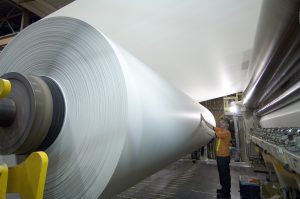 The final reel of paper from No.6, Tokoroa’s last remaining paper mill, once one of six, is being rolled under the smoke and steam of the mill’s chimneys. In November last year Kinleith’s owner, Oji Fibre Solutions, announced it would shutter the paper mill of its plant and move to importing paper to produce its packaging. Kinleith is losing at least 150 jobs, to say nothing of the contractors, maintenance and supplier businesses downstream. The announcement followed a string of paper mill closures across the country costing 300 jobs, which Oji and other operators attributed to untenable wholesale power costs and year on year losses. For Ian Farrell, who has worked at Kinleith since 1986 the writing was on the wall, though he struggled to accept it. “I thought the government surely wouldn’t let this happen,” he says on the Monday morning the paper mill closed. “We were the last paper manufacturing and packaging site left in the country.”
The final reel of paper from No.6, Tokoroa’s last remaining paper mill, once one of six, is being rolled under the smoke and steam of the mill’s chimneys. In November last year Kinleith’s owner, Oji Fibre Solutions, announced it would shutter the paper mill of its plant and move to importing paper to produce its packaging. Kinleith is losing at least 150 jobs, to say nothing of the contractors, maintenance and supplier businesses downstream. The announcement followed a string of paper mill closures across the country costing 300 jobs, which Oji and other operators attributed to untenable wholesale power costs and year on year losses. For Ian Farrell, who has worked at Kinleith since 1986 the writing was on the wall, though he struggled to accept it. “I thought the government surely wouldn’t let this happen,” he says on the Monday morning the paper mill closed. “We were the last paper manufacturing and packaging site left in the country.” NEW ZEALAND — The timber industry is battening down the hatches, as it struggles with low demand, increased running costs, and wars and tariffs overseas.
NEW ZEALAND — The timber industry is battening down the hatches, as it struggles with low demand, increased running costs, and wars and tariffs overseas. 



 This overview traces the modern history of wood science and technology, particularly from the European perspective. It begins with the early forestry schools in 18th-century Germany, which influenced the founding of similar institutions worldwide. These schools introduced technical subjects, including wood physics, to meet industrial demand, especially from the mining sector. Before formal studies began, early research on wood properties, including moisture relations and strength, appeared in encyclopaedias. With the Industrial Revolution, interest in wood as a construction material grew, linking wood research to engineering and materials science. In the early 20th century, dedicated wood technology institutes marked the birth of wood science as a distinct discipline. …The future of wood science lies in sustainability and the efficient use of resources. As interest in renewable, bio-based alternatives to steel and concrete grows, further research on wood functionalisation and modification will be vital.
This overview traces the modern history of wood science and technology, particularly from the European perspective. It begins with the early forestry schools in 18th-century Germany, which influenced the founding of similar institutions worldwide. These schools introduced technical subjects, including wood physics, to meet industrial demand, especially from the mining sector. Before formal studies began, early research on wood properties, including moisture relations and strength, appeared in encyclopaedias. With the Industrial Revolution, interest in wood as a construction material grew, linking wood research to engineering and materials science. In the early 20th century, dedicated wood technology institutes marked the birth of wood science as a distinct discipline. …The future of wood science lies in sustainability and the efficient use of resources. As interest in renewable, bio-based alternatives to steel and concrete grows, further research on wood functionalisation and modification will be vital.  The Danish timber industry is warning of significant financial strain following the introduction of new packaging regulations, which came into effect on 1 January as part of the EU’s packaging directive. According to the Danish Wood Packaging Association (DTE), the rules on extended producer responsibility place the cost burden on manufacturers, even when customers dictate the design and specifications. DTE argues this “uneven” implementation could cost the sector over DKK 60 million annually, with pallet prices expected to rise by around 20%. …The association also criticised the fee structure, claiming it relies on outdated data and fails to differentiate between clean, recyclable wood and mixed wood waste, unnecessarily inflating costs and threatening Danish jobs. DTE is calling for reforms to align payment with design responsibility, adjust fees based on environmental impact, and ensure imported packaging is subject to the same standards.
The Danish timber industry is warning of significant financial strain following the introduction of new packaging regulations, which came into effect on 1 January as part of the EU’s packaging directive. According to the Danish Wood Packaging Association (DTE), the rules on extended producer responsibility place the cost burden on manufacturers, even when customers dictate the design and specifications. DTE argues this “uneven” implementation could cost the sector over DKK 60 million annually, with pallet prices expected to rise by around 20%. …The association also criticised the fee structure, claiming it relies on outdated data and fails to differentiate between clean, recyclable wood and mixed wood waste, unnecessarily inflating costs and threatening Danish jobs. DTE is calling for reforms to align payment with design responsibility, adjust fees based on environmental impact, and ensure imported packaging is subject to the same standards.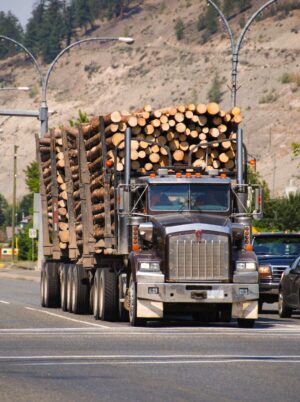 THE majority of consumers cannot identify the primary cause of deforestation – with an increasing number linking it to timber production. That’s going by the results of a major survey from the paper and pulp industry, which also found that more than 60 per cent of people believe only recycled paper should be used to produce new paper products. In contrast, 60 per cent of European consumers believe urban development poses the greatest threat, an increase from 55 per cent in both 2021 and 2023. 58 per cent believe palm oil plantations (up from 52 per cent in 2023), 54 per cent think construction and timber (up from 52 per cent in 2023), 52 per cent believe energy and wood fuel (slightly down from 54 per cent), and 46 per cent deem the paper and pulp industry is the most significant contributor – up from 42 per cent in 2023. …In reality, deforestation is primarily driven by agricultural expansion, especially in tropical and sub-tropical regions.
THE majority of consumers cannot identify the primary cause of deforestation – with an increasing number linking it to timber production. That’s going by the results of a major survey from the paper and pulp industry, which also found that more than 60 per cent of people believe only recycled paper should be used to produce new paper products. In contrast, 60 per cent of European consumers believe urban development poses the greatest threat, an increase from 55 per cent in both 2021 and 2023. 58 per cent believe palm oil plantations (up from 52 per cent in 2023), 54 per cent think construction and timber (up from 52 per cent in 2023), 52 per cent believe energy and wood fuel (slightly down from 54 per cent), and 46 per cent deem the paper and pulp industry is the most significant contributor – up from 42 per cent in 2023. …In reality, deforestation is primarily driven by agricultural expansion, especially in tropical and sub-tropical regions.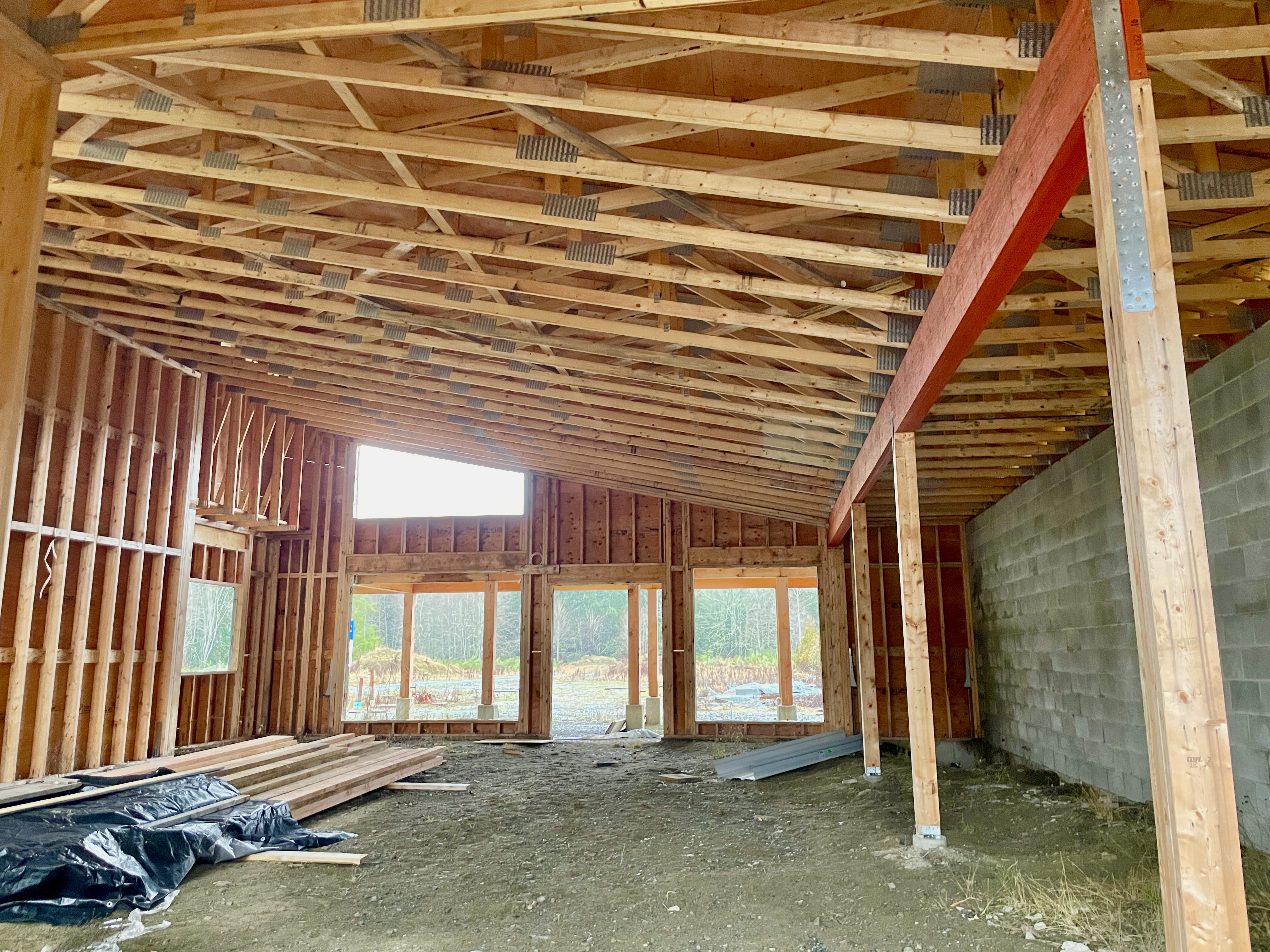 Timber roof trusses have the lowest climate impact across all measured span lengths when compared to concrete, steel, and glulam options. A study conducted by Zeina Alasadi and Selma Bergström Denizoglu at Chalmers University of Technology, Sweden, shows that nail plate connected timber trusses consistently outperform other materials in reducing CO₂ emissions, even when more timber units are required to match the span coverage of a single truss made from concrete or steel. The analysis covered trusses with spans from 6 to 26 meters and focused exclusively on emissions from the production phase, using life cycle assessment (LCA) data corresponding to stages A1–A3. The timber trusses were evaluated using verified environmental product declarations (EPDs) from Derome, which supplied design specifications and material volumes. Timber trusses with spans of 6, 8, 12, and 20 meters generated CO₂ emissions of 59.72 kg, 78.5 kg, 145.15 kg, and 352.5 kg respectively when scaled to match standard center distances.
Timber roof trusses have the lowest climate impact across all measured span lengths when compared to concrete, steel, and glulam options. A study conducted by Zeina Alasadi and Selma Bergström Denizoglu at Chalmers University of Technology, Sweden, shows that nail plate connected timber trusses consistently outperform other materials in reducing CO₂ emissions, even when more timber units are required to match the span coverage of a single truss made from concrete or steel. The analysis covered trusses with spans from 6 to 26 meters and focused exclusively on emissions from the production phase, using life cycle assessment (LCA) data corresponding to stages A1–A3. The timber trusses were evaluated using verified environmental product declarations (EPDs) from Derome, which supplied design specifications and material volumes. Timber trusses with spans of 6, 8, 12, and 20 meters generated CO₂ emissions of 59.72 kg, 78.5 kg, 145.15 kg, and 352.5 kg respectively when scaled to match standard center distances.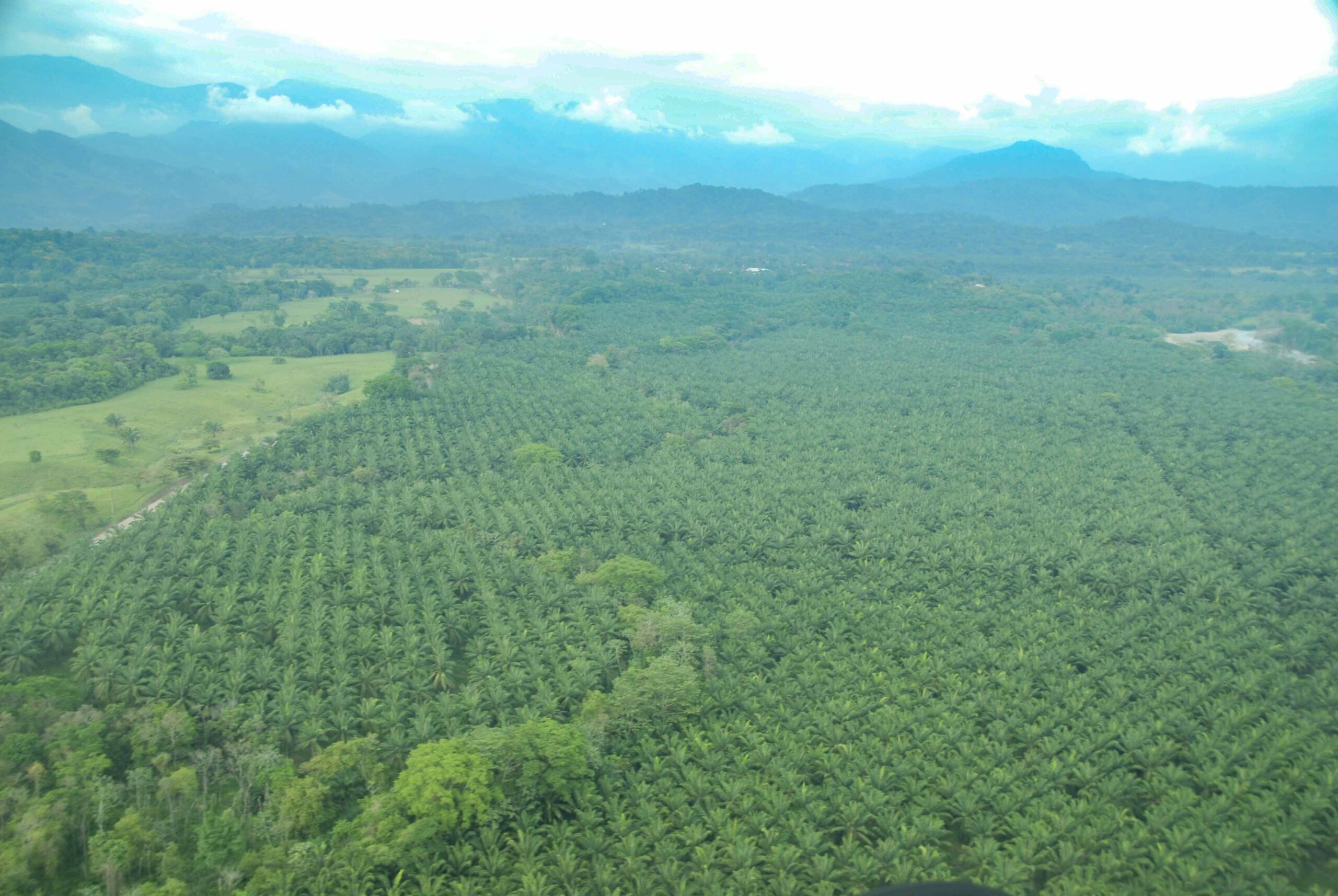
 Industry concerns have been raised over a freshly-struck agreement between the EU and the US over future trading arrangements, which observers have asserted could lead to America being offered exceptions from complying with EUDR environmental laws, reports Neill Barston. As the Palm Oil Monitor non-governmental organisation noted, if America is to be permitted exemptions from data monitoring underpinning the entire basis of the much-anticipated deforestation laws following intense lobbying from its paper industry, then other trading partners including Malaysia and Indonesia – which have core interests in the supply of palm oils for the confectionery and snacks sector, should be allowed similar treatment. …Moreover, as the palm oil industry organisation stated, unveiling the broader US-EU Trade Framework Agreement presents an immediate major hurdle for the EU Commission. In seemingly offering preferential treatment for America, this could, in its view, lead to challenges from the World Trade Organisation over equal trading between nationalities.
Industry concerns have been raised over a freshly-struck agreement between the EU and the US over future trading arrangements, which observers have asserted could lead to America being offered exceptions from complying with EUDR environmental laws, reports Neill Barston. As the Palm Oil Monitor non-governmental organisation noted, if America is to be permitted exemptions from data monitoring underpinning the entire basis of the much-anticipated deforestation laws following intense lobbying from its paper industry, then other trading partners including Malaysia and Indonesia – which have core interests in the supply of palm oils for the confectionery and snacks sector, should be allowed similar treatment. …Moreover, as the palm oil industry organisation stated, unveiling the broader US-EU Trade Framework Agreement presents an immediate major hurdle for the EU Commission. In seemingly offering preferential treatment for America, this could, in its view, lead to challenges from the World Trade Organisation over equal trading between nationalities.

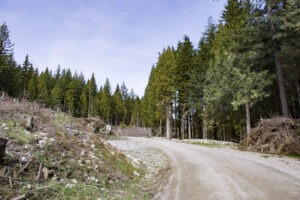 UK — The majority of leading tropical forestry companies do not disclose where their materials come from, meaning they will fail to comply with the EU’s forthcoming Regulation on Deforestation-free Products (EUDR). The Zoological Society of London’s (ZSL) latest assessment found that only 18% of the world’s largest 100 tropical forestry companies disclose the countries from which they source. Additionally, only 4% state the percentage of their supply that is traceable to the forest management unit level. The assessment additionally found that none of the companies studied have published georeferenced maps for third-party FMUs, with only 3% reporting on how much of their supply is verified deforestation-free. Without clarity around sourcing and supply, companies are unable to prove responsible sourcing to stakeholders. Given that the timber and pulp industry is worth $480bn a year, ZSL said, small traceability failures can put billions of market value at risk.
UK — The majority of leading tropical forestry companies do not disclose where their materials come from, meaning they will fail to comply with the EU’s forthcoming Regulation on Deforestation-free Products (EUDR). The Zoological Society of London’s (ZSL) latest assessment found that only 18% of the world’s largest 100 tropical forestry companies disclose the countries from which they source. Additionally, only 4% state the percentage of their supply that is traceable to the forest management unit level. The assessment additionally found that none of the companies studied have published georeferenced maps for third-party FMUs, with only 3% reporting on how much of their supply is verified deforestation-free. Without clarity around sourcing and supply, companies are unable to prove responsible sourcing to stakeholders. Given that the timber and pulp industry is worth $480bn a year, ZSL said, small traceability failures can put billions of market value at risk.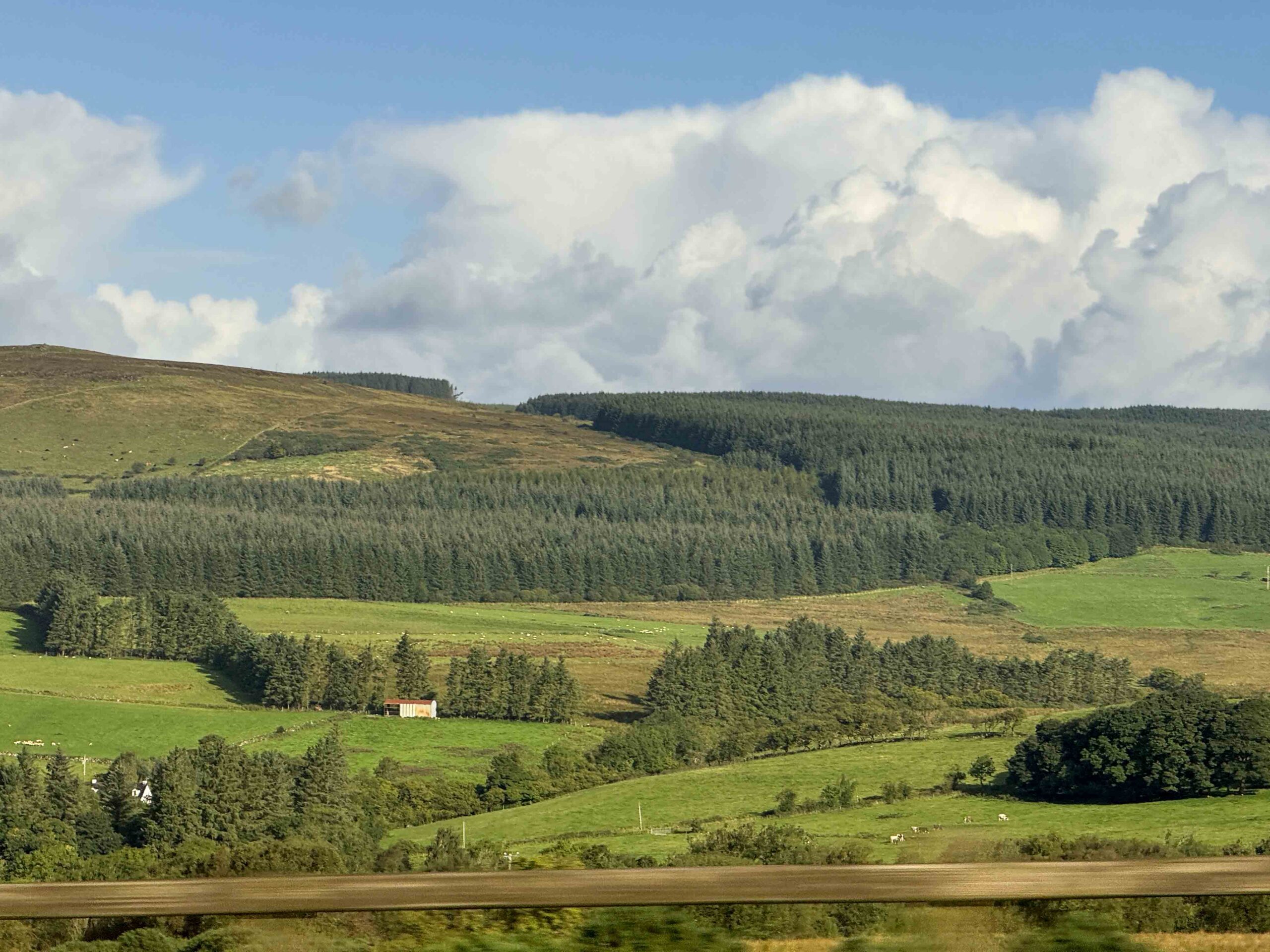 IRELAND — The next forestry programme must “ensure that forestry as a land use option is economically viable and competitive, while satisfying environmental requirements”, according to the Irish Farmers’ Association (IFA). IFA president Francie Gorman has said that forestry is a “strategically important sector that has a key role to play in achieving climate change targets”. …Ireland’s largest forestry and timber body, Forest Industries Ireland (FII) has highlighted the “huge opportunity” for farmers “to take advantage of afforestation grant schemes” during a meeting with the IFA this week. FII highlighted the need for more farmers to consider planting forestry on their land amid rapid growth in global demand for timber products, driving up the value of future forestry harvests. “The Irish timber industry has the potential to significantly grow as many countries move towards net zero carbon targets and focus on sustainable building materials such as timber.”
IRELAND — The next forestry programme must “ensure that forestry as a land use option is economically viable and competitive, while satisfying environmental requirements”, according to the Irish Farmers’ Association (IFA). IFA president Francie Gorman has said that forestry is a “strategically important sector that has a key role to play in achieving climate change targets”. …Ireland’s largest forestry and timber body, Forest Industries Ireland (FII) has highlighted the “huge opportunity” for farmers “to take advantage of afforestation grant schemes” during a meeting with the IFA this week. FII highlighted the need for more farmers to consider planting forestry on their land amid rapid growth in global demand for timber products, driving up the value of future forestry harvests. “The Irish timber industry has the potential to significantly grow as many countries move towards net zero carbon targets and focus on sustainable building materials such as timber.”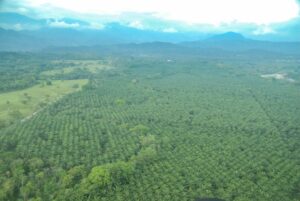 The Amazon rainforest is one of Earth’s most diverse ecosystems, playing a key role in maintaining regional and global climate stability. However, recent changes in land use, vegetation, and the climate have disrupted biosphere-atmosphere interactions, leading to significant alterations in the water, energy, and carbon cycles. …Here, we quantify the relative contributions of deforestation and global climate change to observed shifts in key Amazonian climate parameters. We analyzed long-term atmospheric and land cover change data across 29 areas in the Brazilian Legal Amazon from 1985 to 2020. …While the rise in atmospheric methane (CH4) and carbon dioxide (CO2) mixing ratios is primarily driven by global emissions, deforestation has significantly increased surface air temperatures and reduced precipitation during the Amazonian dry season. Over the past 35 years, deforestation has accounted for approximately 74% of the ~ 21 mm dry season decline and 16.5% of the 2°C rise in maximum surface air temperature.
The Amazon rainforest is one of Earth’s most diverse ecosystems, playing a key role in maintaining regional and global climate stability. However, recent changes in land use, vegetation, and the climate have disrupted biosphere-atmosphere interactions, leading to significant alterations in the water, energy, and carbon cycles. …Here, we quantify the relative contributions of deforestation and global climate change to observed shifts in key Amazonian climate parameters. We analyzed long-term atmospheric and land cover change data across 29 areas in the Brazilian Legal Amazon from 1985 to 2020. …While the rise in atmospheric methane (CH4) and carbon dioxide (CO2) mixing ratios is primarily driven by global emissions, deforestation has significantly increased surface air temperatures and reduced precipitation during the Amazonian dry season. Over the past 35 years, deforestation has accounted for approximately 74% of the ~ 21 mm dry season decline and 16.5% of the 2°C rise in maximum surface air temperature. 
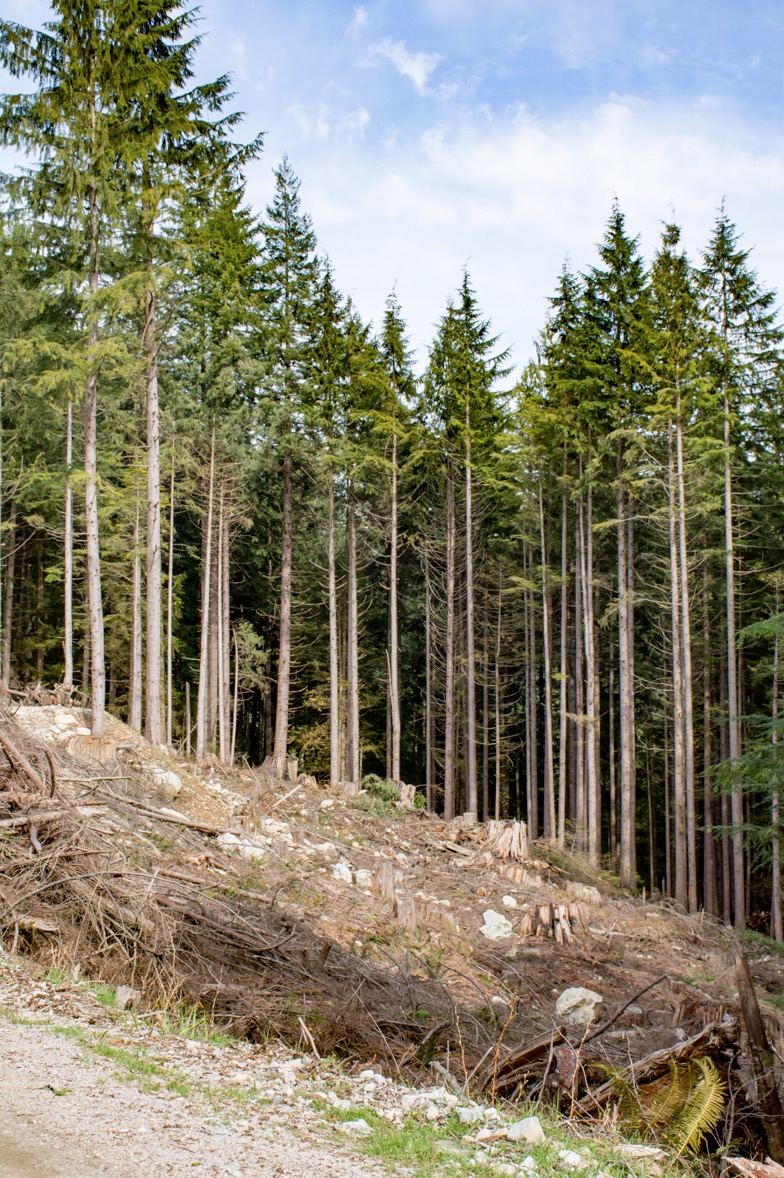 The occurrence and fate of microplastics in forest ecosystems is a recognized knowledge gap. In this paper, we used an aligned extraction method to quantify microplastics (>20 µm) in organic and mineral forest soil horizons and throughfall deposition. Calculation of forest soil microplastic stocks and throughfall fluxes allowed an estimation of throughfall contribution to microplastic accumulation in forest soils back to 1950. We identified a short-term microplastic enrichment in decomposed litter horizons followed by an accumulation in lower mineral soil caused by litter turnover processes. Similar microplastic features in soil and throughfall deposition indicate that microplastics entering forest soils primarily originate from atmospheric deposition and litter fall, while other sources have a minor impact. We conclude that forests are good indicators for atmospheric microplastic pollution and that high microplastic concentrations in forest soils indicate a high diffuse input of microplastics into these ecosystems.
The occurrence and fate of microplastics in forest ecosystems is a recognized knowledge gap. In this paper, we used an aligned extraction method to quantify microplastics (>20 µm) in organic and mineral forest soil horizons and throughfall deposition. Calculation of forest soil microplastic stocks and throughfall fluxes allowed an estimation of throughfall contribution to microplastic accumulation in forest soils back to 1950. We identified a short-term microplastic enrichment in decomposed litter horizons followed by an accumulation in lower mineral soil caused by litter turnover processes. Similar microplastic features in soil and throughfall deposition indicate that microplastics entering forest soils primarily originate from atmospheric deposition and litter fall, while other sources have a minor impact. We conclude that forests are good indicators for atmospheric microplastic pollution and that high microplastic concentrations in forest soils indicate a high diffuse input of microplastics into these ecosystems. Three nations joined forces Friday to establish what will become the second-largest nature reserve in Latin America. Mexico, Guatemala, and Belize announced the creation of a massive tri-national protected area spanning 14 million acres (5.7 million hectares) across the heart of the ancient Maya forest. The announcement came during a summit in Calakmul, where Mexican President Claudia Sheinbaum stood alongside Guatemalan President Bernardo Arévalo and Belize Prime Minister Johnny Briceño to reveal plans for the Biocultural Corridor of the Great Mayan Forest. “This is one of Earth’s lungs, a living space for thousands of species with an invaluable cultural legacy that we should preserve with our eyes on the future,” Sheinbaum said during the joint press conference. She called the move “historic.” The new reserve will encompass 50 existing protected areas across the three countries.
Three nations joined forces Friday to establish what will become the second-largest nature reserve in Latin America. Mexico, Guatemala, and Belize announced the creation of a massive tri-national protected area spanning 14 million acres (5.7 million hectares) across the heart of the ancient Maya forest. The announcement came during a summit in Calakmul, where Mexican President Claudia Sheinbaum stood alongside Guatemalan President Bernardo Arévalo and Belize Prime Minister Johnny Briceño to reveal plans for the Biocultural Corridor of the Great Mayan Forest. “This is one of Earth’s lungs, a living space for thousands of species with an invaluable cultural legacy that we should preserve with our eyes on the future,” Sheinbaum said during the joint press conference. She called the move “historic.” The new reserve will encompass 50 existing protected areas across the three countries. One of the key agreements for Amazon rainforest protection – the soy moratorium – has been suspended by Brazilian authorities, potentially opening up an area the size of Portugal to destruction by farmers. Coming less than three months before Brazil hosts the Cop30 climate summit in Belém, the news has shocked conservation groups, who say it is now more important than ever that consumers, supermarkets and traders stand up against Brazilian agribusiness groups that are using their growing political power to reverse past environmental gains. Brazil is the world’s biggest soya bean exporter. The legume … posed a huge deforestation threat to the Amazon rainforest until stakeholders voluntarily agreed to impose a moratorium and no longer source it from the region in 2006. …Greenpeace Brazil called the move a “terrible mistake”, which was the result of political pressure from the “regressive wings of agribusiness”…
One of the key agreements for Amazon rainforest protection – the soy moratorium – has been suspended by Brazilian authorities, potentially opening up an area the size of Portugal to destruction by farmers. Coming less than three months before Brazil hosts the Cop30 climate summit in Belém, the news has shocked conservation groups, who say it is now more important than ever that consumers, supermarkets and traders stand up against Brazilian agribusiness groups that are using their growing political power to reverse past environmental gains. Brazil is the world’s biggest soya bean exporter. The legume … posed a huge deforestation threat to the Amazon rainforest until stakeholders voluntarily agreed to impose a moratorium and no longer source it from the region in 2006. …Greenpeace Brazil called the move a “terrible mistake”, which was the result of political pressure from the “regressive wings of agribusiness”… …Sweden, like Canada, sits atop vast boreal forests — part of the same great green belt circling the Northern Hemisphere. These forests act as planetary lungs, storing more carbon than even the Amazon. But the Swedish government’s latest forestry inquiry, En robust skogspolitik för aktivt skogsbruk, is heading in a troubling direction: grow more trees, cut them faster, and burn or export more biomass in the name of “green energy.” It sounds like a climate solution. But here’s the problem: forests are not factories. Most of the carbon in a boreal forest isn’t stored in the trees at all. It’s locked underground — in roots, fungi, humus, and delicate microbial networks built up over thousands of years. When forestry is intensified — shorter harvest cycles, heavier machines, wider clear-cuts — that underground bank of carbon is steadily drained. The trees grow back, yes, but the soil can take centuries to recover, if it recovers at all.
…Sweden, like Canada, sits atop vast boreal forests — part of the same great green belt circling the Northern Hemisphere. These forests act as planetary lungs, storing more carbon than even the Amazon. But the Swedish government’s latest forestry inquiry, En robust skogspolitik för aktivt skogsbruk, is heading in a troubling direction: grow more trees, cut them faster, and burn or export more biomass in the name of “green energy.” It sounds like a climate solution. But here’s the problem: forests are not factories. Most of the carbon in a boreal forest isn’t stored in the trees at all. It’s locked underground — in roots, fungi, humus, and delicate microbial networks built up over thousands of years. When forestry is intensified — shorter harvest cycles, heavier machines, wider clear-cuts — that underground bank of carbon is steadily drained. The trees grow back, yes, but the soil can take centuries to recover, if it recovers at all.

 Researchers warn that simultaneous fires across Europe are overwhelming firefighting resources. Climate change made weather that fuelled Portugal and Spain’s deadly wildfires this summer around 40 times more likely, new research has found. Blazes in the Iberian Peninsula broke out at the end of July. Fuelled by temperatures above 40°C and strong winds, the flames spread extremely rapidly. The area burned by these wildfires has now broken records across Spain and Portugal. A new super rapid scientific analysis by World Weather Attribution (WWA) has found that these hot, dry and windy conditions were made more likely and more intense by human-caused climate change. Dr Clair Barnes, researcher for the Centre for Environmental Policy at Imperial College London, warns that the “astonishing” size of these fires is a “sign of what is to come” with hotter, drier, more flammable conditions becoming more severe with climate change.
Researchers warn that simultaneous fires across Europe are overwhelming firefighting resources. Climate change made weather that fuelled Portugal and Spain’s deadly wildfires this summer around 40 times more likely, new research has found. Blazes in the Iberian Peninsula broke out at the end of July. Fuelled by temperatures above 40°C and strong winds, the flames spread extremely rapidly. The area burned by these wildfires has now broken records across Spain and Portugal. A new super rapid scientific analysis by World Weather Attribution (WWA) has found that these hot, dry and windy conditions were made more likely and more intense by human-caused climate change. Dr Clair Barnes, researcher for the Centre for Environmental Policy at Imperial College London, warns that the “astonishing” size of these fires is a “sign of what is to come” with hotter, drier, more flammable conditions becoming more severe with climate change.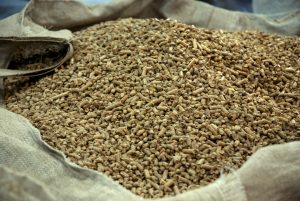 Investors in Drax have a problem. Shares in the company that produces 10% of the UK’s renewable power plunged last week after the Financial Conduct Authority launched a probe into its financial reports. The investigation centres on whether the company had misrepresented the origin of the biomass pellets it burns to create electricity. …But even assuming Drax does what it says it does, it has a second problem. Its business model, reliant on burning imported sustainable biomass to generate power, is inherently controversial. Net zero supporters don’t think Drax is sustainable enough, fearing that forestry companies might classify more wood as rubbish if selling waste pellets became lucrative. …Drax may not be easy to like, but it does make up an important part of the UK energy system. …So far, politicians have walked a line, extending support but cutting its size.
Investors in Drax have a problem. Shares in the company that produces 10% of the UK’s renewable power plunged last week after the Financial Conduct Authority launched a probe into its financial reports. The investigation centres on whether the company had misrepresented the origin of the biomass pellets it burns to create electricity. …But even assuming Drax does what it says it does, it has a second problem. Its business model, reliant on burning imported sustainable biomass to generate power, is inherently controversial. Net zero supporters don’t think Drax is sustainable enough, fearing that forestry companies might classify more wood as rubbish if selling waste pellets became lucrative. …Drax may not be easy to like, but it does make up an important part of the UK energy system. …So far, politicians have walked a line, extending support but cutting its size.  STOCKHOLM — A political fight has erupted in Sweden over whether forest owners should be paid to delay harvesting trees as part of the country’s contribution to the EU’s ambitious carbon removal targets. The EU’s Land Use, Land Use Change and Forestry (LULUCF) regulation requires the bloc to remove 310 million metric tons of CO2 equivalent by 2030. With Sweden holding the EU’s largest forest area, the country is expected to play a central role in meeting that target. In 2022, the government commissioned a parliamentary committee to explore how to incentivize carbon storage. Its proposal: legally binding contracts offering landowners 400 SEK (~$42) per ton of CO2 if they delay felling their trees for 5 to 20 years beyond the minimum harvest age. …The plan has triggered fierce opposition. The Swedish Forest Industries Federation warns that 7,200 jobs are at risk, with smaller sawmills particularly vulnerable. …Supporters, however, argue that paying landowners reflects the forest’s true value.
STOCKHOLM — A political fight has erupted in Sweden over whether forest owners should be paid to delay harvesting trees as part of the country’s contribution to the EU’s ambitious carbon removal targets. The EU’s Land Use, Land Use Change and Forestry (LULUCF) regulation requires the bloc to remove 310 million metric tons of CO2 equivalent by 2030. With Sweden holding the EU’s largest forest area, the country is expected to play a central role in meeting that target. In 2022, the government commissioned a parliamentary committee to explore how to incentivize carbon storage. Its proposal: legally binding contracts offering landowners 400 SEK (~$42) per ton of CO2 if they delay felling their trees for 5 to 20 years beyond the minimum harvest age. …The plan has triggered fierce opposition. The Swedish Forest Industries Federation warns that 7,200 jobs are at risk, with smaller sawmills particularly vulnerable. …Supporters, however, argue that paying landowners reflects the forest’s true value. Energy company Drax is under investigation by the UK’s financial watchdog over the firm’s sourcing of wood for biomass pellets in the wake of whistleblower claims. The London-listed group said the Financial Conduct Authority (FCA) probe covers more than two years, from January 2022 to March 2024, and will also look at compliance of Drax’s annual reports from 2021, 2022 and 2023 with rules over listing, disclosure and transparency. Drax said it will “co-operate with the FCA as part of their investigation”. Shares in the FTSE 250 firm fell 8% in morning trading on Thursday. It follows accusations by Drax’s former head of public affairs and policy, Rowaa Ahmar, in March that the company had misled over its sourcing of wood for biomass pellets, which were made as part of her claim for unfair dismissal at an employment tribunal. Drax denied her claims. The firm and Ms Ahmar reached a settlement with Drax just over a week after the case opened.
Energy company Drax is under investigation by the UK’s financial watchdog over the firm’s sourcing of wood for biomass pellets in the wake of whistleblower claims. The London-listed group said the Financial Conduct Authority (FCA) probe covers more than two years, from January 2022 to March 2024, and will also look at compliance of Drax’s annual reports from 2021, 2022 and 2023 with rules over listing, disclosure and transparency. Drax said it will “co-operate with the FCA as part of their investigation”. Shares in the FTSE 250 firm fell 8% in morning trading on Thursday. It follows accusations by Drax’s former head of public affairs and policy, Rowaa Ahmar, in March that the company had misled over its sourcing of wood for biomass pellets, which were made as part of her claim for unfair dismissal at an employment tribunal. Drax denied her claims. The firm and Ms Ahmar reached a settlement with Drax just over a week after the case opened. Climate-heating emissions from wildfires in the European Union have surged to record levels this year as flames have engulfed over 1 million hectares of land – equal to 13 times the size of New York City – since January. Blazes sweeping through the continent – with major hotspots in Spain and Portugal – have so far released 38.37 million tonnes of carbon dioxide (CO2) emissions into the atmosphere, more than the annual CO2 emissions of Sweden, according to data from the European Forest Fire Information System (EFFIS). That’s more than double the average historical CO2 emissions recorded during the same months over the last 20 years. …Forests act as important carbon sinks, but when they burn, they release back into the atmosphere the carbon stored in the trunks, branches and leaves of their trees as well as in the soil. …Scientists have warned of the emergence of a ‘feedback loop’ between climate change and fires.
Climate-heating emissions from wildfires in the European Union have surged to record levels this year as flames have engulfed over 1 million hectares of land – equal to 13 times the size of New York City – since January. Blazes sweeping through the continent – with major hotspots in Spain and Portugal – have so far released 38.37 million tonnes of carbon dioxide (CO2) emissions into the atmosphere, more than the annual CO2 emissions of Sweden, according to data from the European Forest Fire Information System (EFFIS). That’s more than double the average historical CO2 emissions recorded during the same months over the last 20 years. …Forests act as important carbon sinks, but when they burn, they release back into the atmosphere the carbon stored in the trunks, branches and leaves of their trees as well as in the soil. …Scientists have warned of the emergence of a ‘feedback loop’ between climate change and fires.  “Protecting diversity tends to be an afterthought when it comes to carbon-offsetting projects,” says conservation scientist Aakash Lamba, a CNCS postdoctoral research fellow. “The narrative at the moment is usually carbon first, biodiversity second.”In certain reforestation initiatives, for example, a single tree species might be planted because it can grow quickly and absorb large amounts of carbon in a short span of time. But the lack of diversity in such monocultures can lead to a slew of problems, including increased disease risk and soil degradation. Recognizing the interconnectedness of biodiversity and carbon offsetting goals could unlock unforeseen opportunities and funding for conservation programmes, Koh points out. The centre’s researchers have set about detailing how ‘win-win’ conservation projects have already brought about both biodiversity gains and carbon mitigation benefits. India’s tiger reserves provide a prime example of how habitat protection leads to more intact ecosystems and bolsters carbon sequestration.
“Protecting diversity tends to be an afterthought when it comes to carbon-offsetting projects,” says conservation scientist Aakash Lamba, a CNCS postdoctoral research fellow. “The narrative at the moment is usually carbon first, biodiversity second.”In certain reforestation initiatives, for example, a single tree species might be planted because it can grow quickly and absorb large amounts of carbon in a short span of time. But the lack of diversity in such monocultures can lead to a slew of problems, including increased disease risk and soil degradation. Recognizing the interconnectedness of biodiversity and carbon offsetting goals could unlock unforeseen opportunities and funding for conservation programmes, Koh points out. The centre’s researchers have set about detailing how ‘win-win’ conservation projects have already brought about both biodiversity gains and carbon mitigation benefits. India’s tiger reserves provide a prime example of how habitat protection leads to more intact ecosystems and bolsters carbon sequestration.